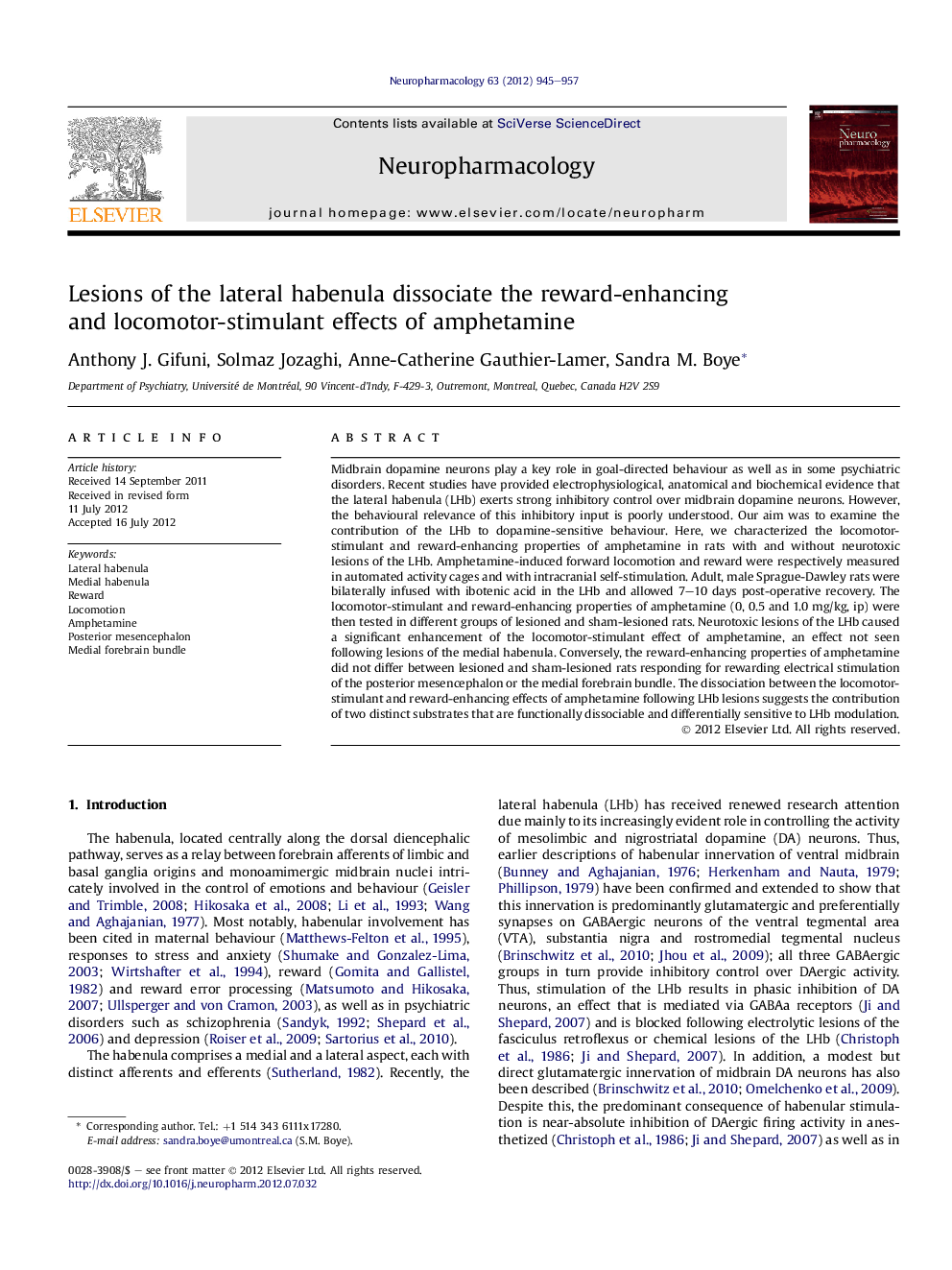| Article ID | Journal | Published Year | Pages | File Type |
|---|---|---|---|---|
| 5815640 | Neuropharmacology | 2012 | 13 Pages |
Midbrain dopamine neurons play a key role in goal-directed behaviour as well as in some psychiatric disorders. Recent studies have provided electrophysiological, anatomical and biochemical evidence that the lateral habenula (LHb) exerts strong inhibitory control over midbrain dopamine neurons. However, the behavioural relevance of this inhibitory input is poorly understood. Our aim was to examine the contribution of the LHb to dopamine-sensitive behaviour. Here, we characterized the locomotor-stimulant and reward-enhancing properties of amphetamine in rats with and without neurotoxic lesions of the LHb. Amphetamine-induced forward locomotion and reward were respectively measured in automated activity cages and with intracranial self-stimulation. Adult, male Sprague-Dawley rats were bilaterally infused with ibotenic acid in the LHb and allowed 7-10 days post-operative recovery. The locomotor-stimulant and reward-enhancing properties of amphetamine (0, 0.5 and 1.0Â mg/kg, ip) were then tested in different groups of lesioned and sham-lesioned rats. Neurotoxic lesions of the LHb caused a significant enhancement of the locomotor-stimulant effect of amphetamine, an effect not seen following lesions of the medial habenula. Conversely, the reward-enhancing properties of amphetamine did not differ between lesioned and sham-lesioned rats responding for rewarding electrical stimulation of the posterior mesencephalon or the medial forebrain bundle. The dissociation between the locomotor-stimulant and reward-enhancing effects of amphetamine following LHb lesions suggests the contribution of two distinct substrates that are functionally dissociable and differentially sensitive to LHb modulation.
⺠We examined the contribution of the lateral habenula to dopamine-sensitive behaviour. ⺠We lesioned the lateral habenula with ibotenic acid and measured amphetamine-induced locomotion and reward. ⺠Neurotoxic lesions enhanced amphetamine-induced locomotion but not reward. ⺠Our results suggest two substrates with differential sensitivity to habenular control.
